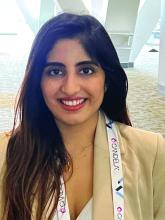Study Stands Out
A number of studies of the 2910-nm erbium-doped fluoride glass fiber laser have emerged over the past half year, Ritu Swali, MD, who was an American Society of Dermatologic Surgery fellow at a practice in Houston, said in an interview at the meeting. But this one stands out because of the evidence surrounding its use.
Most people are using this laser for facial resurfacing, “and we want to know that we have a technology ... with shorter downtime and easier wound care and just more comfort,” she said.
She noted that with conventional lasers, most patients get nerve blocks and some even opt for general anesthesia. “To be able to do the levels of facial resurfacing [Dr. Murray] is doing without having to do all of that pain management is pretty amazing,” Dr. Swali added.
The speed of the procedure and the relatively short downtime are also noteworthy, she said. “The huge advantage is having so much less pain from the procedure itself, so you’re able to do it faster because they’re tolerating it so well and you’re not having to take breaks,” she said.
As for downtime, Dr. Swali added, “these patients are coming in on a Thursday and they are back up and running by Monday,” as opposed to weeks that is typical with a conventional laser. This laser platform also avoids the pigmentation problems that can come with continuing and aggressive treatment with conventional lasers, she said.
Dr. Murray disclosed relationships with Acclaro Medical, the manufacturer of the laser. Dr. Swali has no relationships to disclose.
A version of this article first appeared on Medscape.com.


